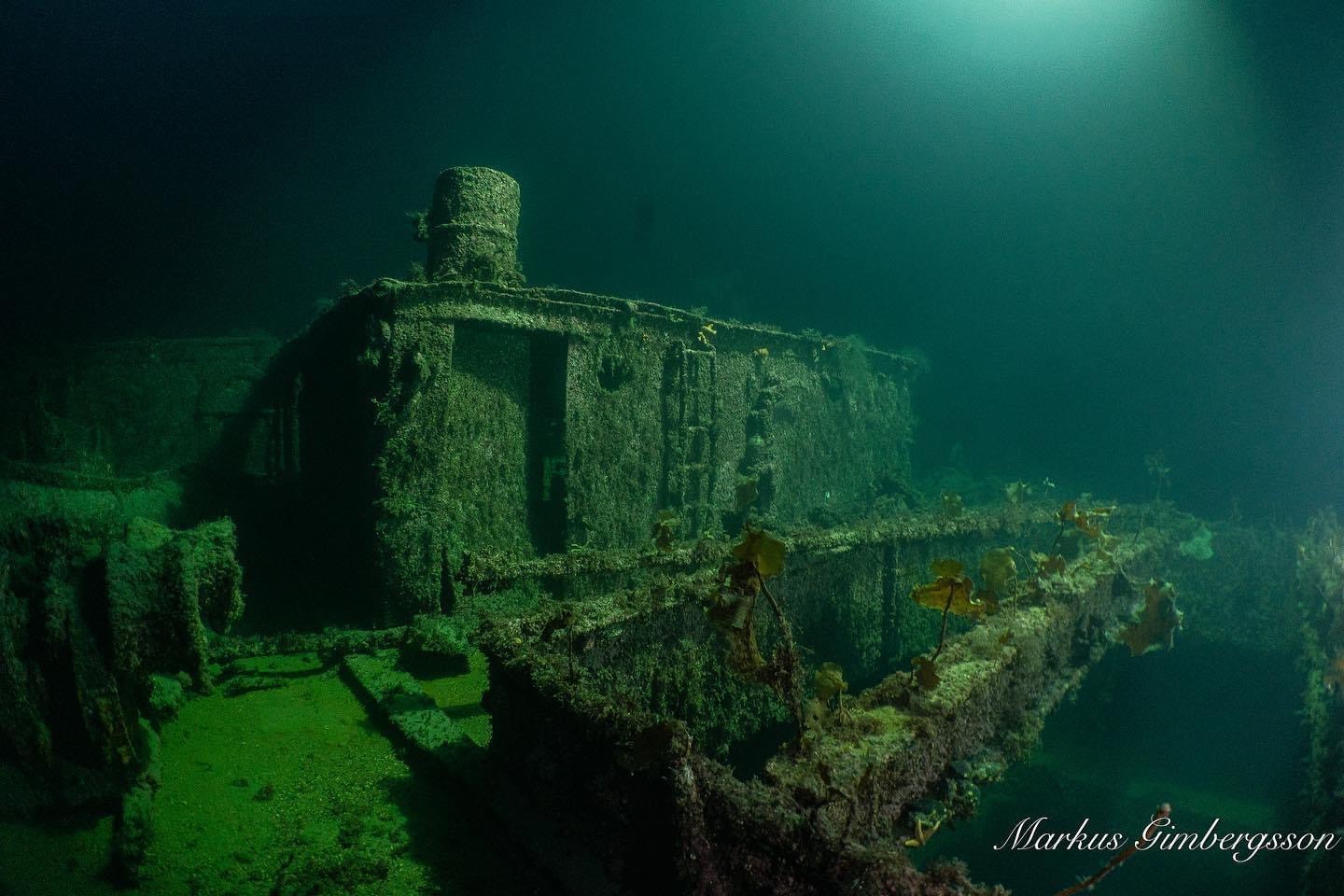History
M/S Stråssa was one of Grängesbergsbolaget’s first diesel engine ships, built in 1921 at Götaverken. It was named Stråssa after the mining field in Bergslagen and the ship was put on ore shipping, mostly to America. Stråssa’s commander was Captain Åhgren until he had to abandon her in Narvik. Stråssa was on its way to America with a cargo of ore from Narvik on May 8, 1940, when the refrigerator on board broke down, so instead of risking the food on board being spoiled in the heat, it was decided to return to Narvik and repair the refrigerator. On the way in they encountered the German destroyers on their way to occupy Norway and Stråssa was ordered to return to Narvik and anchor in the harbor.
The ship was then held there by the Germans. Here, Stråssa was exposed to shell fire and air strikes during the battles for Narvik. The crew was thus forced to leave the ship. Stråssa, however, survived the battle, but on May 11 a powerful explosion was heard from Stråssa’s bow and a cloud of black smoke was seen above her, after which she sank in about ten minutes. The day before the detonation, it was stated that Germans were seen driving a rowing boat on a car towards the place where Stråssa was located. It was also said that at night you could hear years from the same bay. The naval declaration thus assumed that Stråssa sank as a result of an explosion from an explosive charge placed inside. The crew eventually returned to Sweden and went to sea again with other ships.
The diving
Stråssa stands at a bottom depth of approx. 26m, but rises up to 14 metres. After the war, the bridge was blown up and pulled off with a cable, so that it would not pose a danger to shipping. The bridge and masts protruded above the surface. The sights on the wreck are many. You can swim through the fine gullies on the sides of the bridge and the engine room, you can also swim into the engine room and see the two large diesel engines sticking up. If you have the right training, you can swim into the workshop behind the machine, where pillar drills and lathes etc. remain. You can also swim from bow to stern all the way inside the wreck. Captain Åhgren’s bathtub can also be found and viewed. There are many different plants growing on the wreck, and fish swim around both inside and outside the wreck. The wreck is suitable for almost all levels of divers.

Facts
Built in 1921 by Ab Götaverken, Gothenburg. Lap number. 356.
- Depth: 14-26 meters
- Average depth: 18-22 meters
- Length: 119.99 meters
- Width: 16.27 meters
- Weight: 8340 tons
- Engine: 2 pcs 6-cyl, Götaverken diesels
- Power: 2600 hp
- Maximum speed: 11.0 knots
